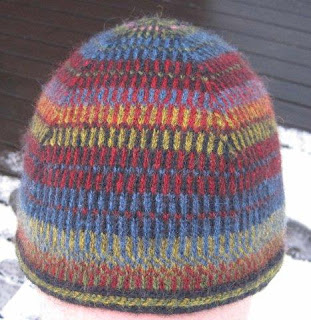Today I visited a release party for a new knitting book
Traditional Swedish Patterns for Knitting. The book is written by Karin Kahnlund and her designs are all inspired by patterns of traditional textiles from the Swedish province of Skåne. The source of inspiration has been Jakob Kulle´s book
Swedish Patterns for Art Weaves and Embroidery (1892), which was reprinted by Rediviva Publishing House in 2008.
Since I am an avid fan of traditional knitting, traditional patterns etc I am glad Karin uses traditional Swedish textile patterns in her book, and I am impressed by her designs.
Her patterns are based on the Swedish knitting tradition of compact patterned knitting in woollen yarn spun from long glossy fibres which become only more beautiful with time.

A really nice thing about this book is that is written in both Swedish and English. Smart and something that I think should be done more often (wouldn´t it have been nice if the reissue of the twined knitting book from Dalarnas Museum had been done in the same way).
Karin has been my teacher in knitting at the courses at The School of the Association of Friends of Textile Art in Stockholm that I have attended. She is a great teacher and her vast knowledge of Swedish traditional knitting has been most inspiring, and an important influence on me as a knitter.
The book contains patterns for mittens, hats, sweaters, cardigans, cushions, leg warmers etc
Karin signing her book.
Book information:
Sticka efter Svenska Mönster
Karin Kahnlund
Traditional Swedish Patterns for Knitting
Rediviva Publishing House 2011
ISBN 978-91-977695-1-8


















































